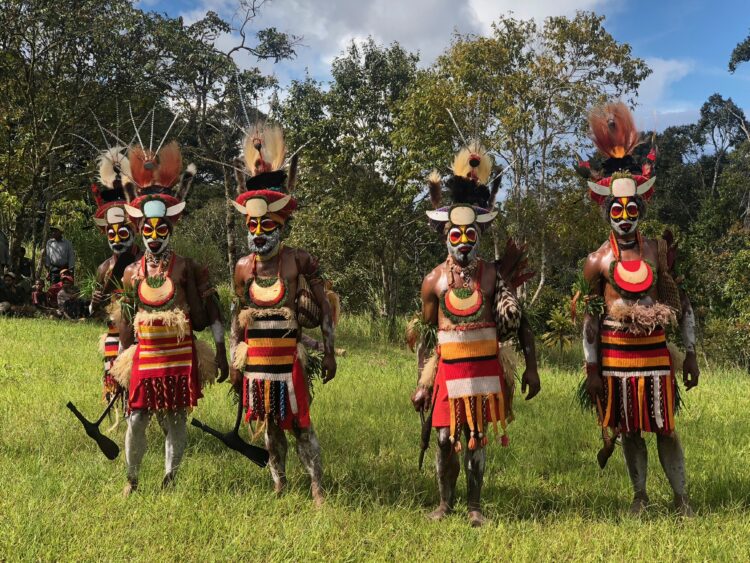We were so excited to be in Papua New Guinea, a place unlike any other! We planned to spend an intense week here and hoped to experience the natural beauty, exotic wildlife, and rich cultural traditions of the country. We were ready to make incredible memories.
Day 44, Saturday, October 19: Mount Hagen
Papua New Guinea (PNG) – located north of Australia in the southwestern Pacific Ocean – occupies the eastern part of the world’s second largest island (the western half of the island has two Indonesian provinces). Linguistically, it’s the world’s most diverse country: more than 800 languages are spoken here, in a population of around 8 million people. (It’s about one fifth of the total number of languages in the world!) And there are more than 1,000 ethnic groups.
Unfortunately, not all places are safe in this country, so our day touring programs were provided by Trans Niugini Tours and we were always accompanied by their local guides.
So, how did we get here?
From our hotel in Brisbane, Australia, we were taken to the airport by car, just before 8 am. We stood in a long line for the check-in for the Air Niugini 10:40 am international flight to Port Moresby, the capital of PNG.
We landed in Port Moresby around 2 pm. Going through the self-checking passport control Steve had no problems, but for me the second part of the process wasn’t successful. That’s when I just stood there and stood there after looking into the camera (for the retina control?) and the gate didn’t open for me, so I started panicking a tiny bit. Then an employee came and directed me to stand in a long line, again, for the regular/classical way of passport checking with all those others who were also, I guess, suspicious for the machine. I had to remember that patience and good humor could help.
At the Port Moresby airport, after Steve exchanged some money for the local currency, an employee of Trans Niugini Tours appeared with some documents and vouchers for us. He explained that we had to check in our small suitcases for the domestic flight to Mount Hagen (first time on this trip!), directed us to the domestic flight area where we waited until we could board the aircraft.
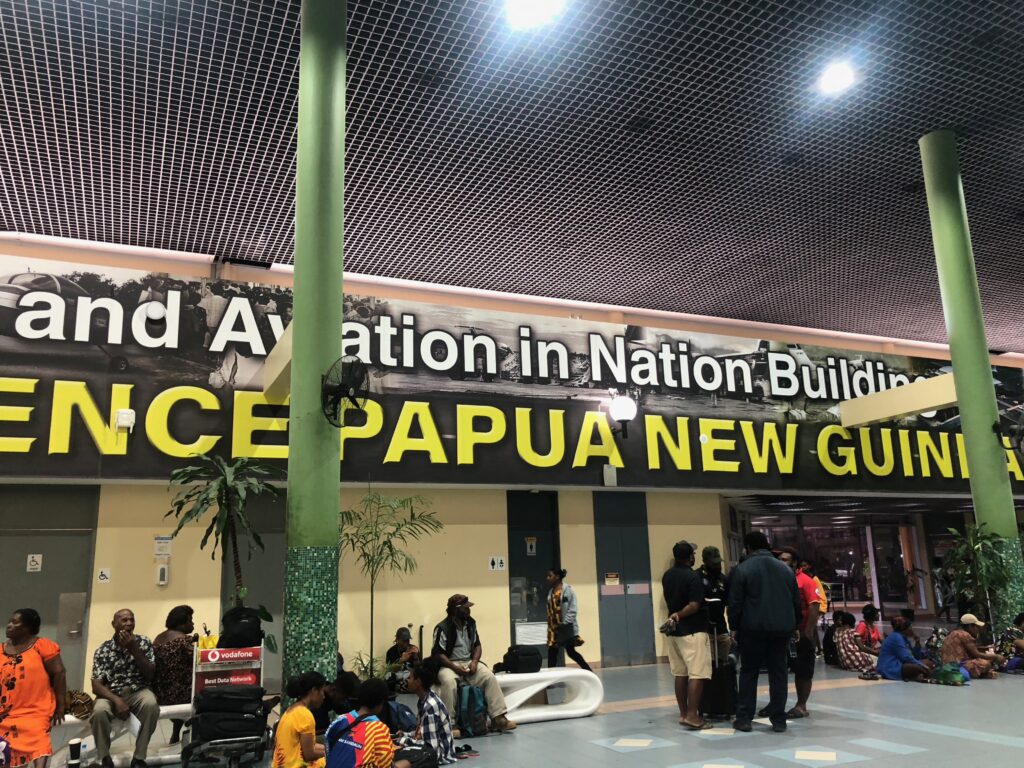
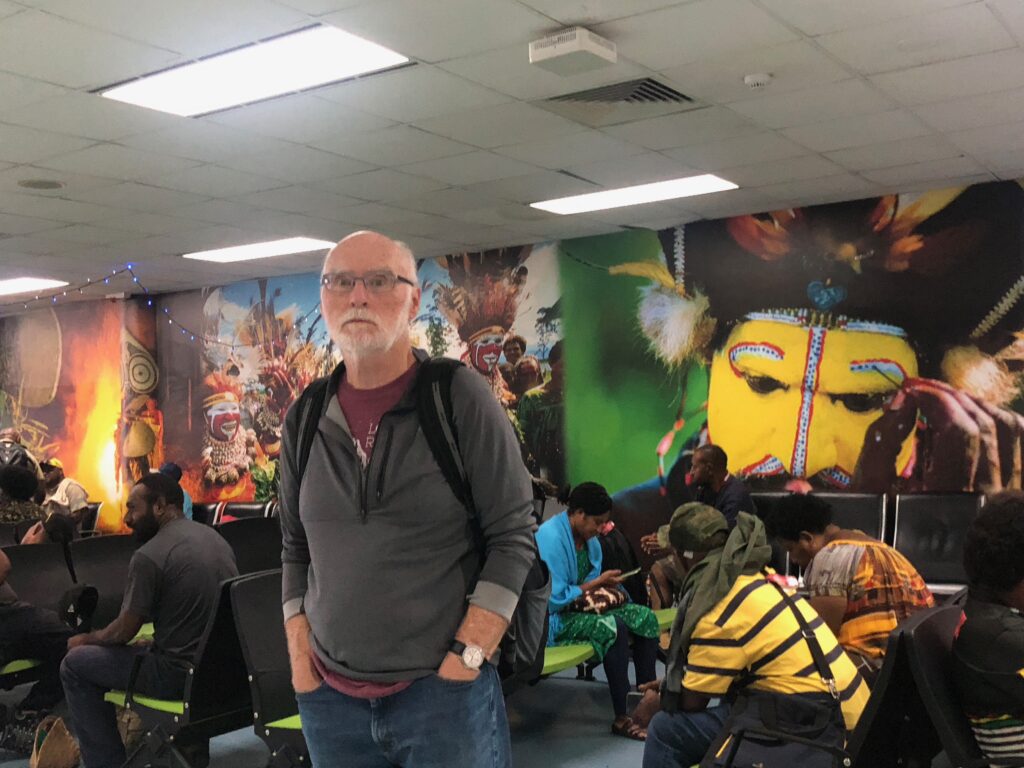
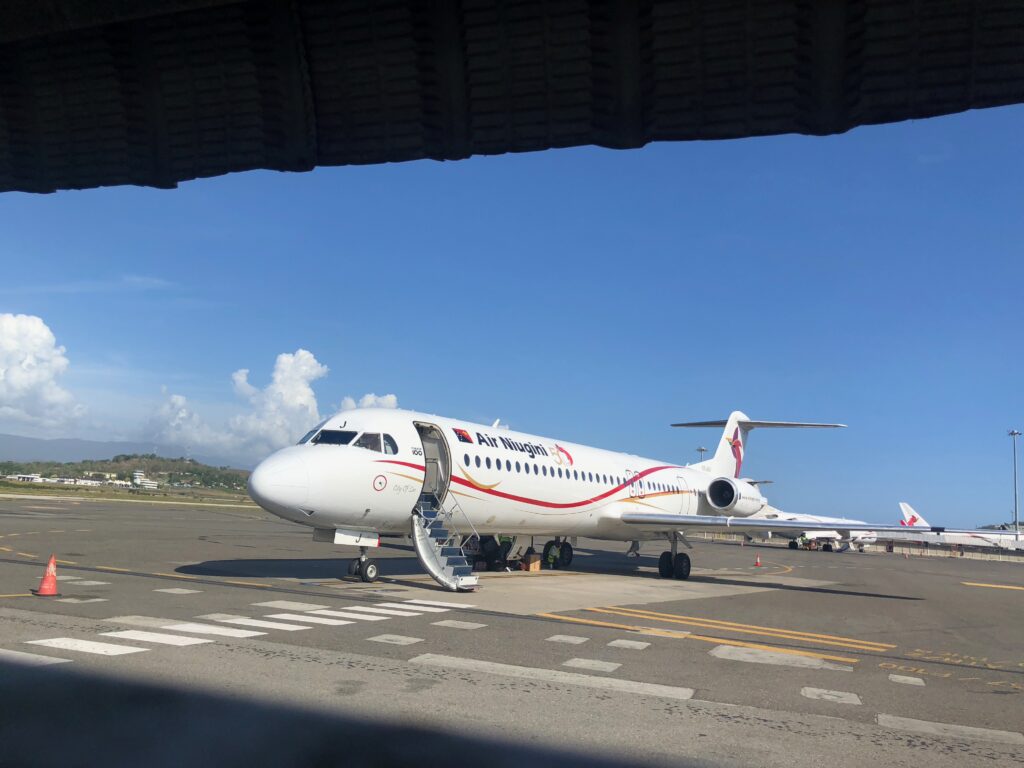 Arrived in Mount Hagen at 5 pm. While waiting for our suitcases, our driver found us.
Arrived in Mount Hagen at 5 pm. While waiting for our suitcases, our driver found us.
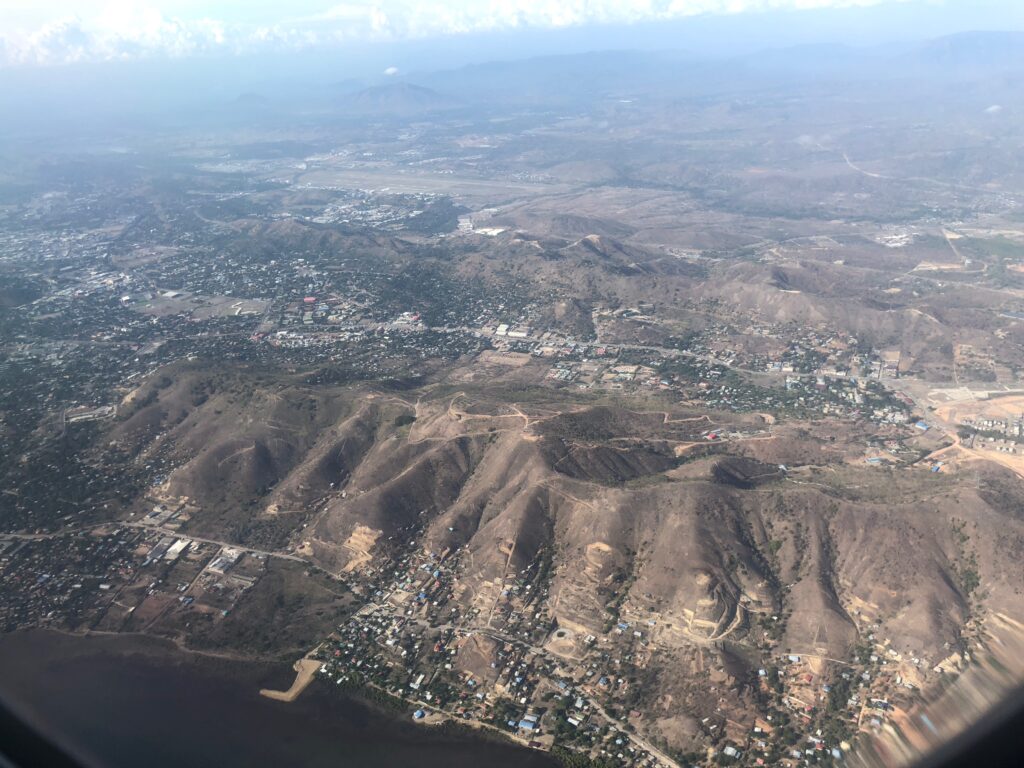
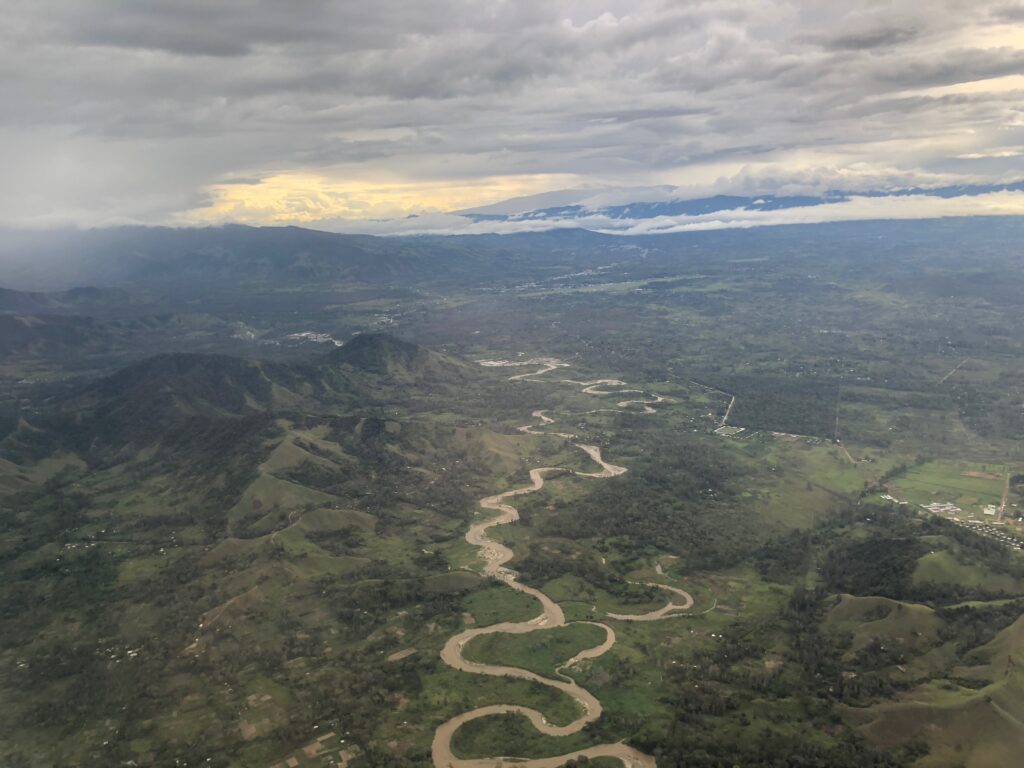
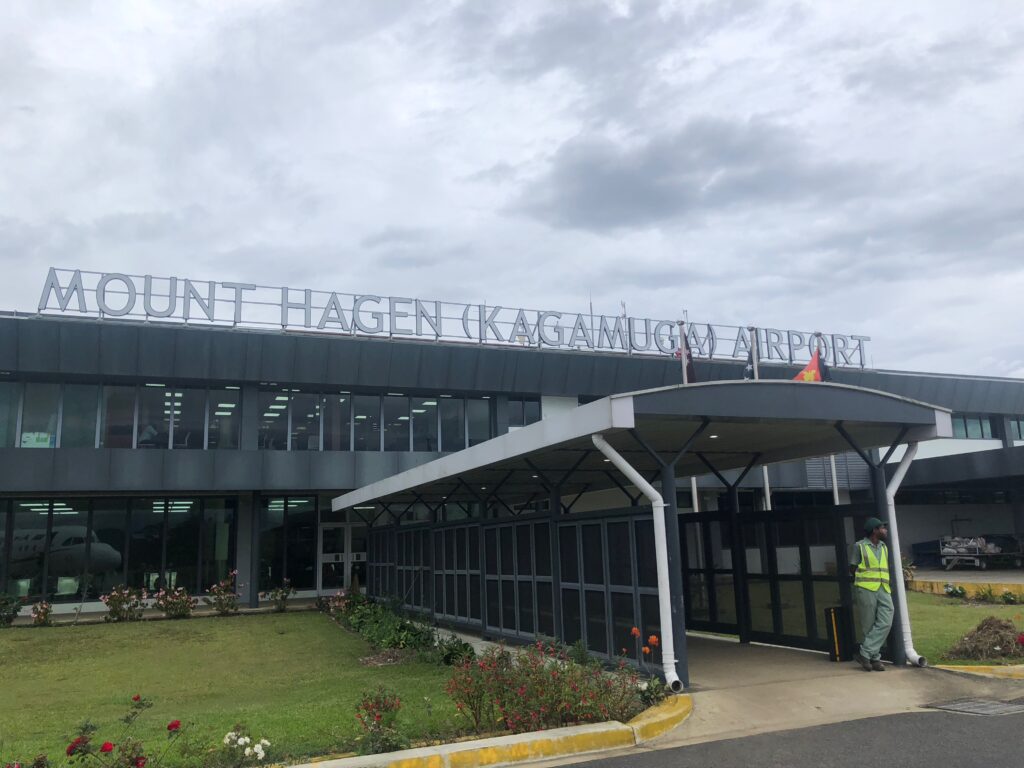 As the car left the airport, we got a glimpse of local street scenes: markets, lots of people, garbage by the road.
As the car left the airport, we got a glimpse of local street scenes: markets, lots of people, garbage by the road.
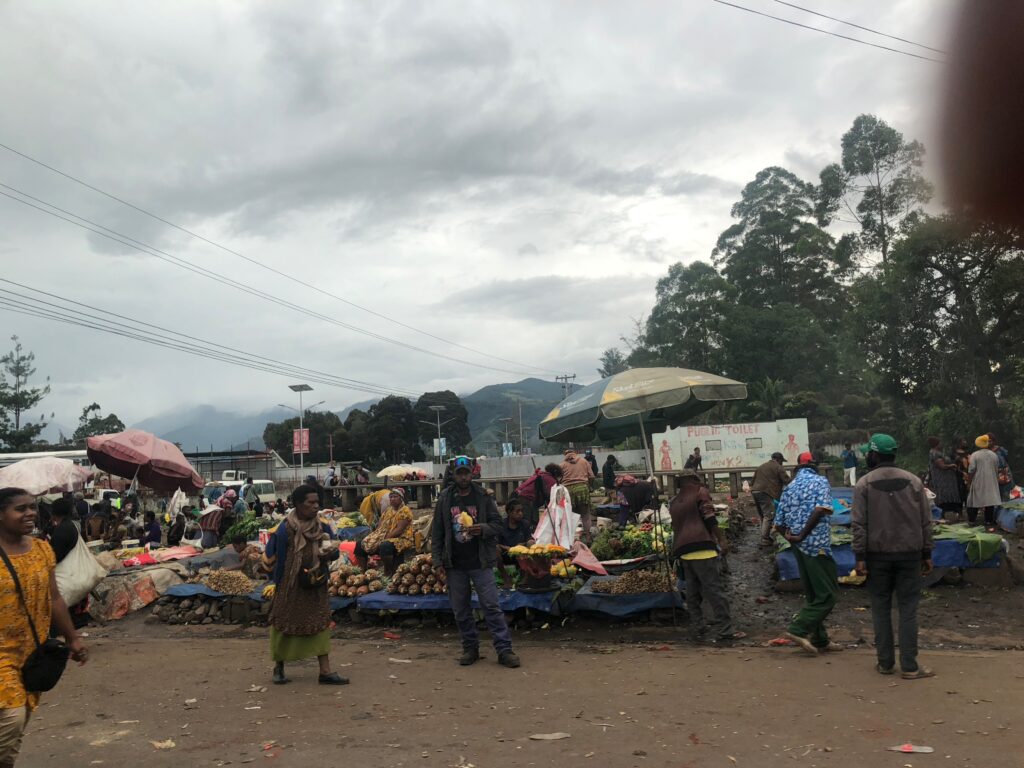 We were driven up – for approximately an hour – a picturesque road (full of potholes) in the mountains to our accommodation, Rondon Ridge; 7000 feet (2100 meters) above sea level.
We were driven up – for approximately an hour – a picturesque road (full of potholes) in the mountains to our accommodation, Rondon Ridge; 7000 feet (2100 meters) above sea level.
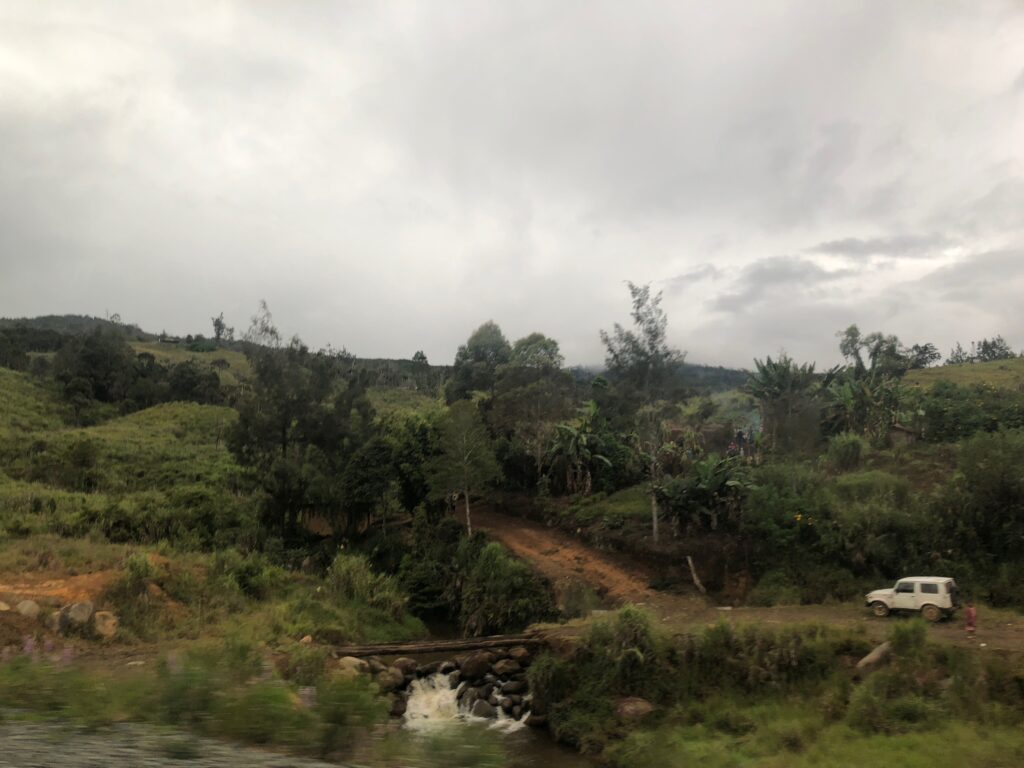
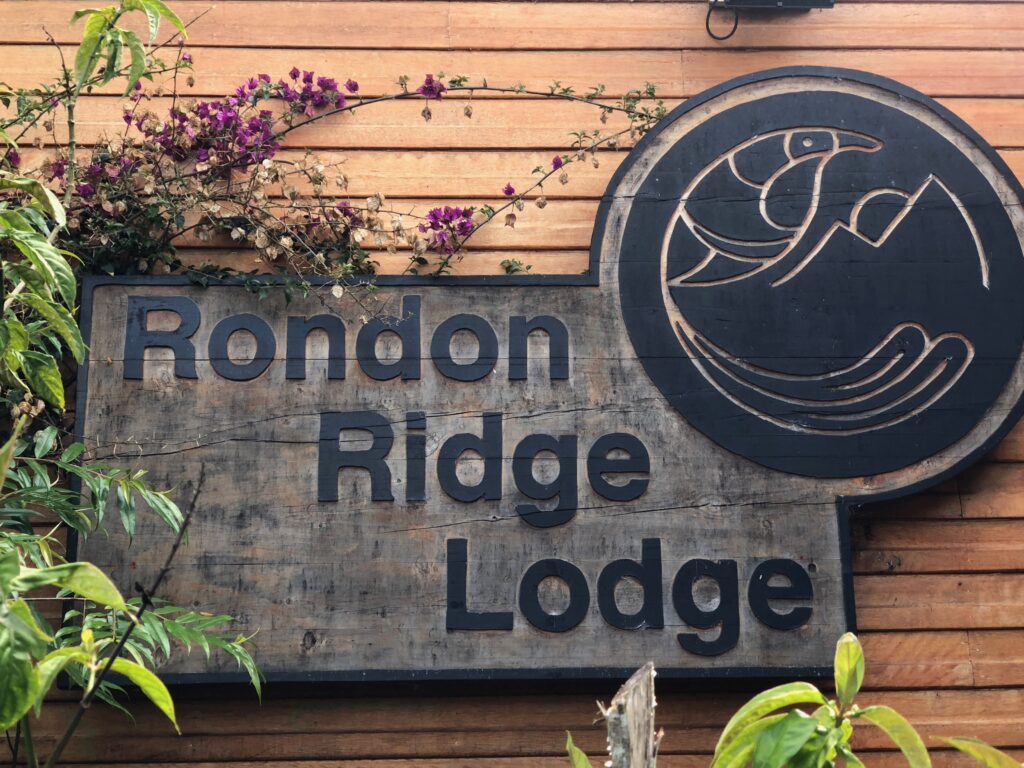 The panoramic views of the surrounding mountains and the valley below, the pristine rainforest, clouds, and variety of plants, all these amazed us from the moment we reached our destination.
The panoramic views of the surrounding mountains and the valley below, the pristine rainforest, clouds, and variety of plants, all these amazed us from the moment we reached our destination.
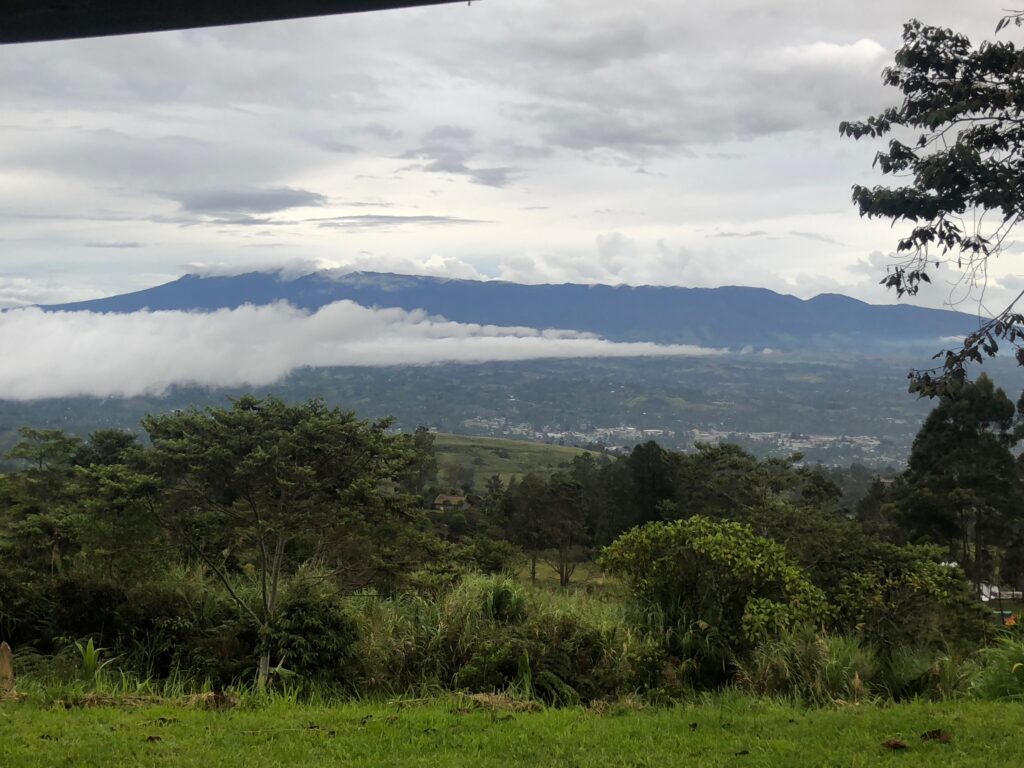
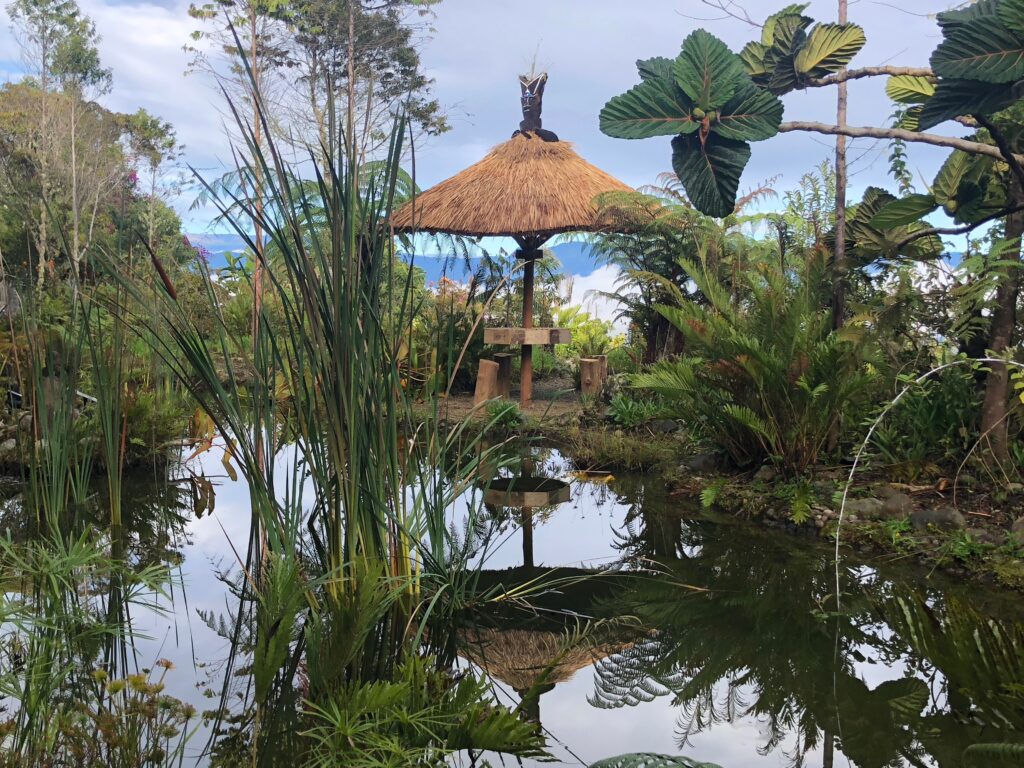
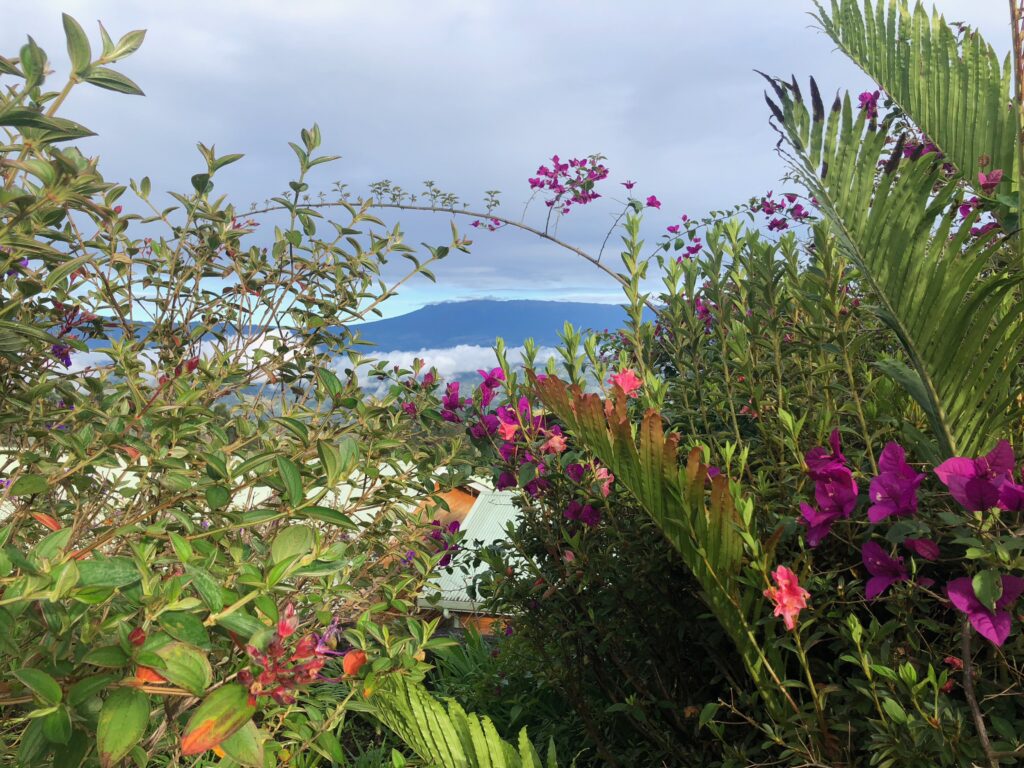
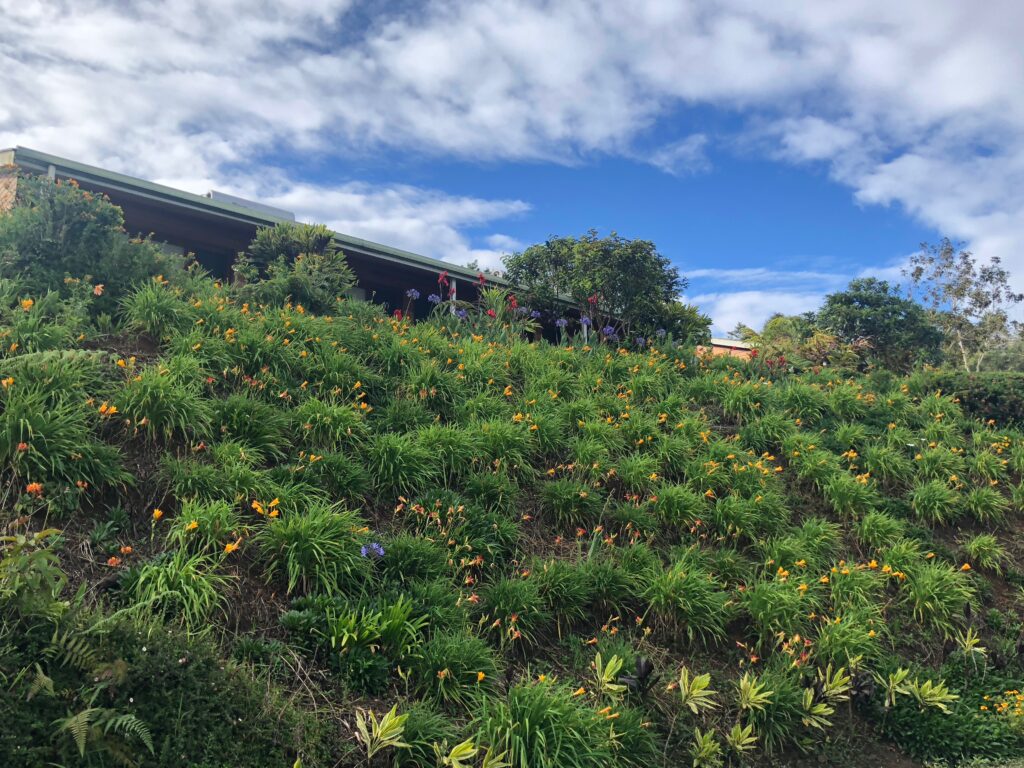 By 6, we were settled in our comfortable cottage, a multiple level “suite” with a patio. We found drinking water in pitchers in the refrigerator. (It’s advised for travelers to avoid drinking tap water directly, especially in rural areas.). Our bed was warmed by an electric blanket for the cooler temperatures.
By 6, we were settled in our comfortable cottage, a multiple level “suite” with a patio. We found drinking water in pitchers in the refrigerator. (It’s advised for travelers to avoid drinking tap water directly, especially in rural areas.). Our bed was warmed by an electric blanket for the cooler temperatures.
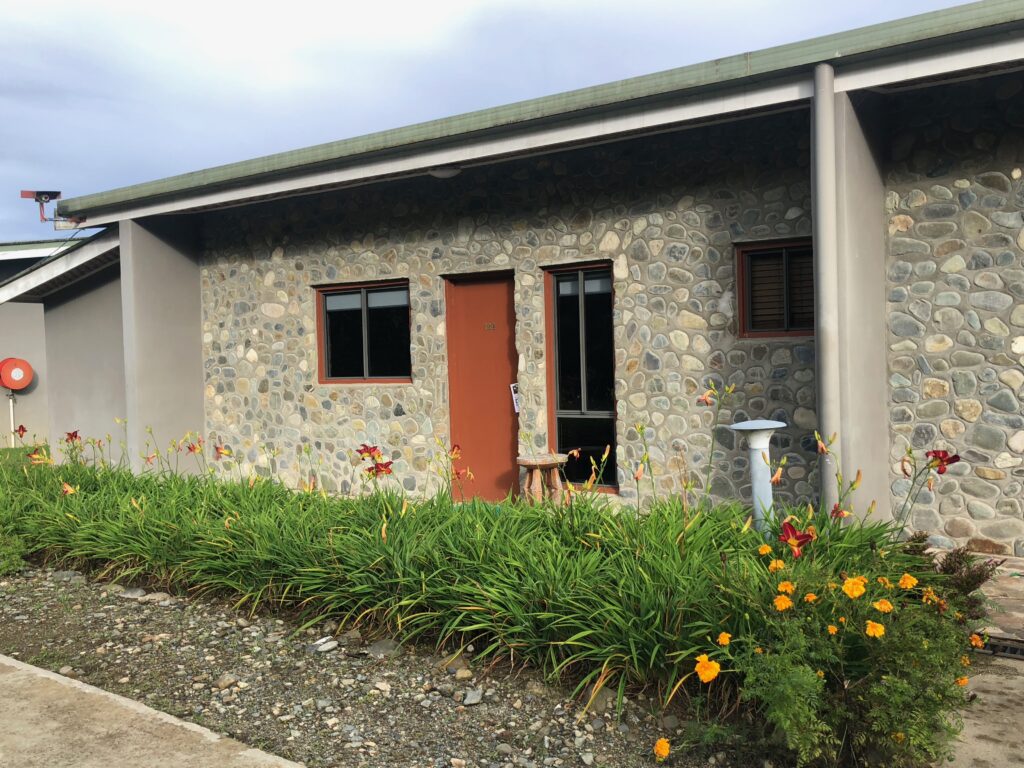
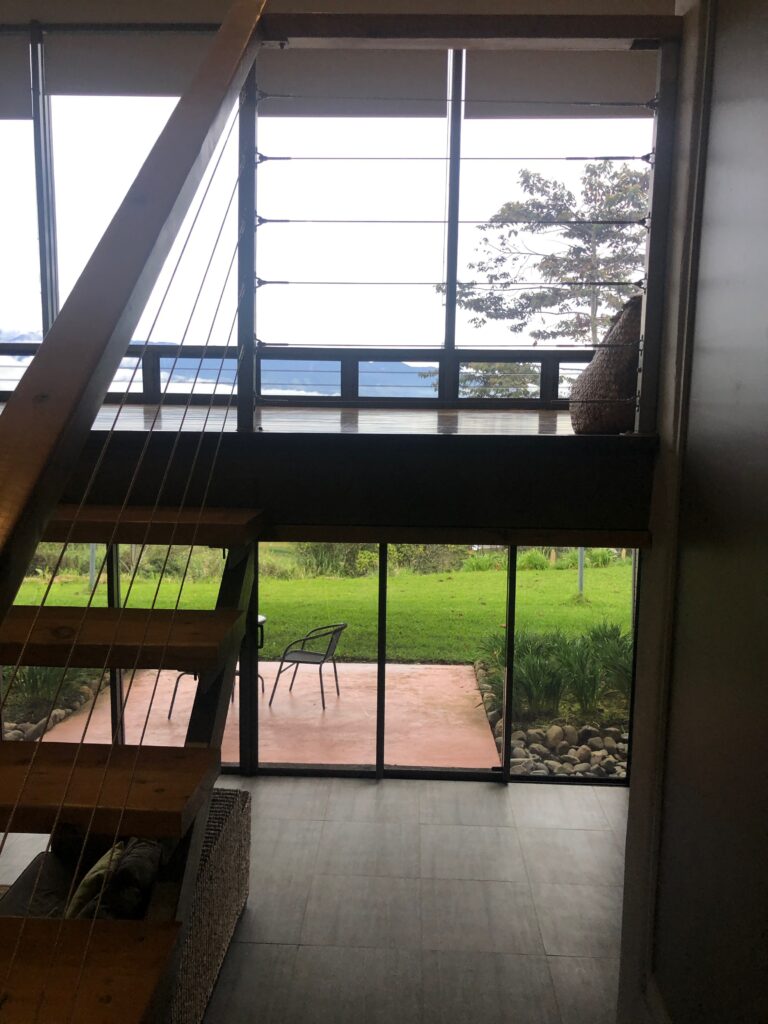
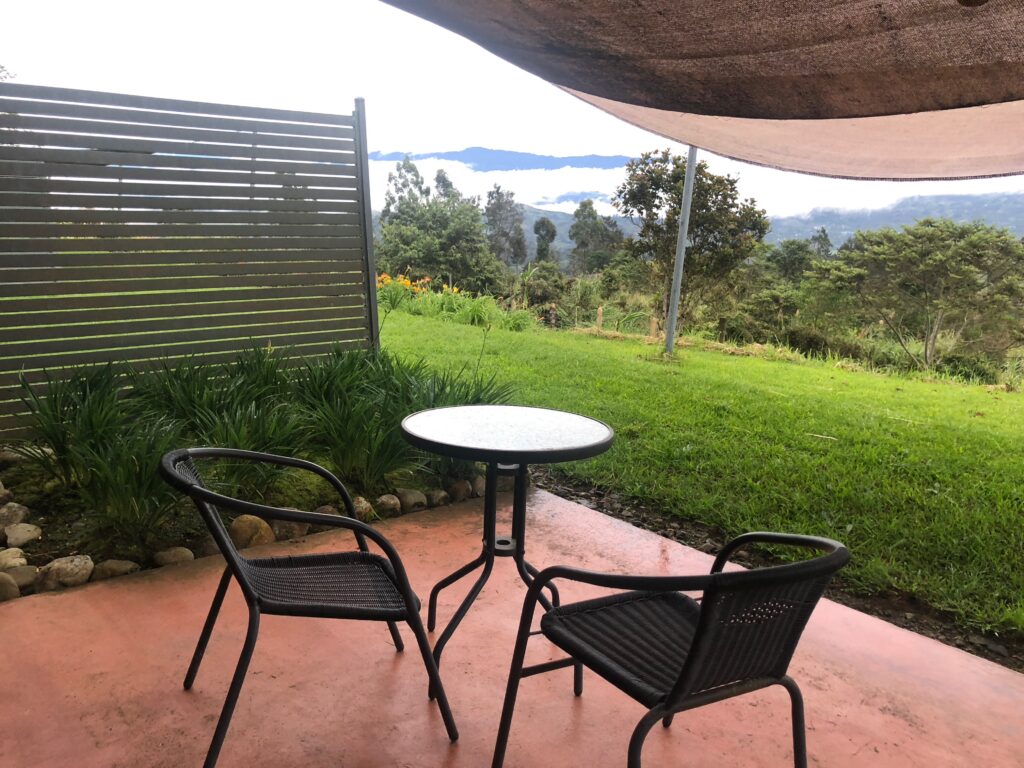 Had our dinner in the main lodge, which we reached by walking up many stairs.
Had our dinner in the main lodge, which we reached by walking up many stairs.
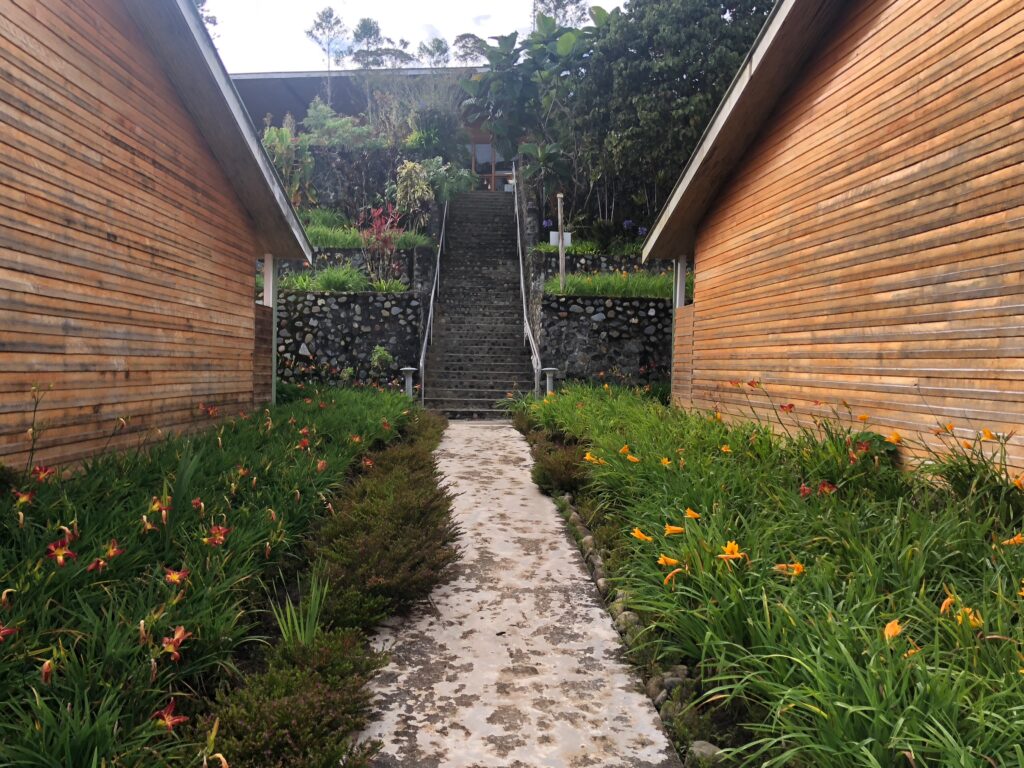
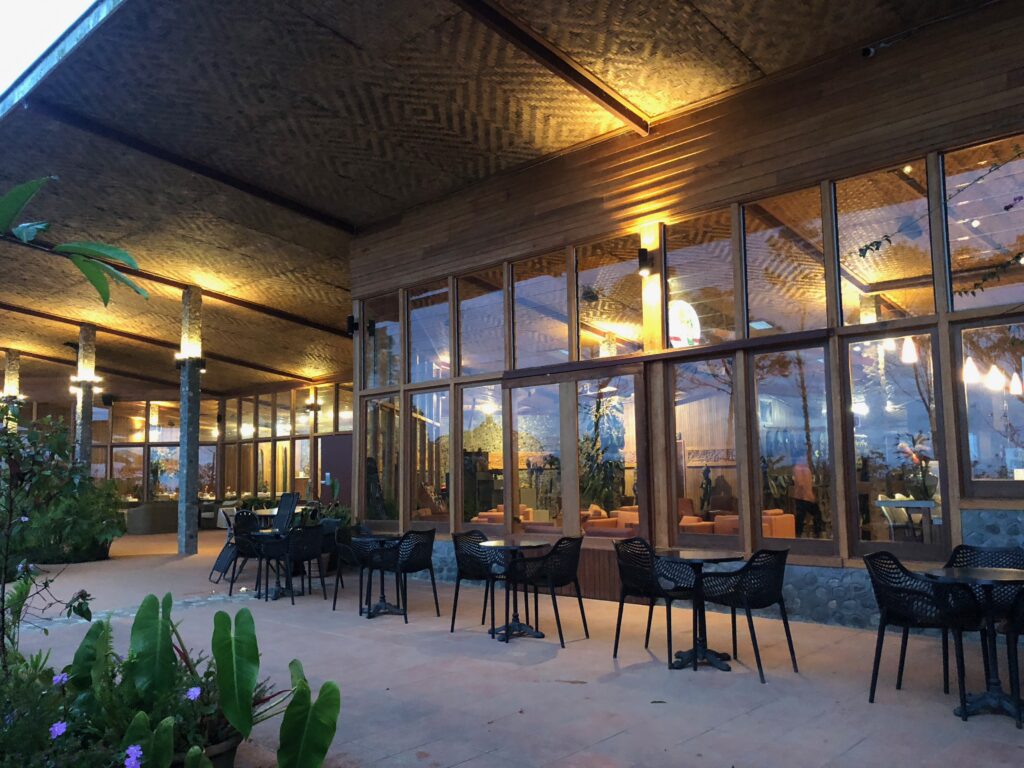
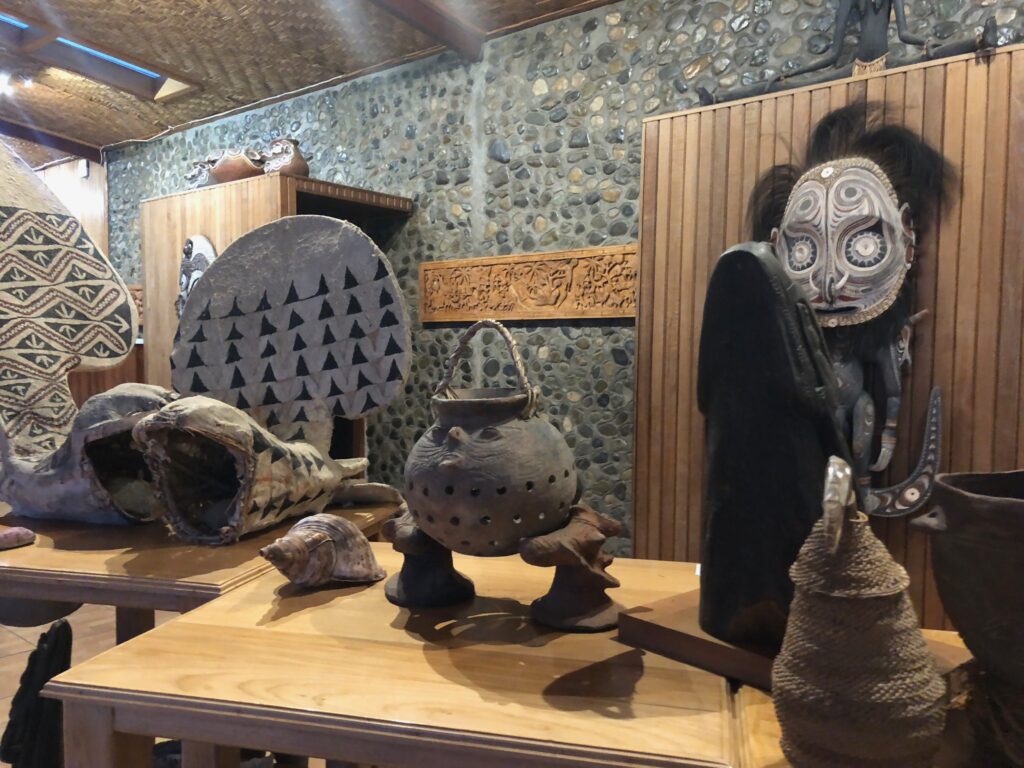 The place wasn’t busy – after all, this wasn’t the high tourist season. Had a lovely conversation with both our waiter and the cook, then we said good night to our first day in Papua New Guinea.
The place wasn’t busy – after all, this wasn’t the high tourist season. Had a lovely conversation with both our waiter and the cook, then we said good night to our first day in Papua New Guinea.
Day 45, Sunday, October 20: Mount Hagen
Our private full day cultural tour started around 9 am. We met our local guide, Janet, and our driver, Thomas, after breakfast, which included delicious local fruit and some eggs. We visited three villages today, driving on incredibly bumpy roads.
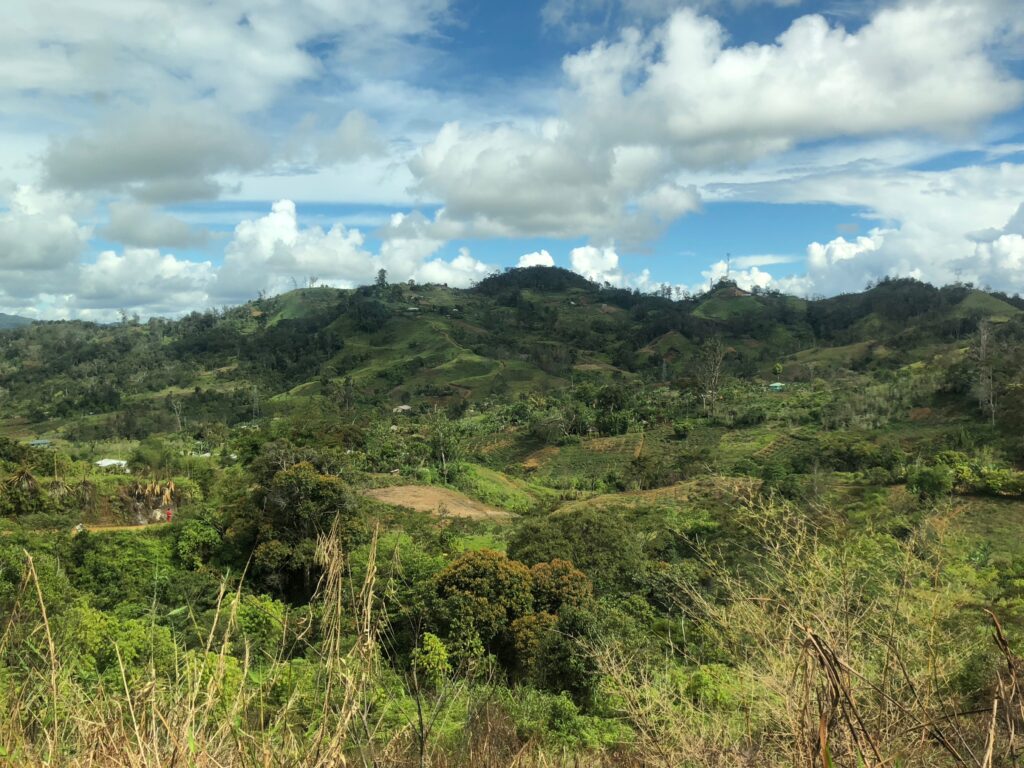 In the Western Highlands Province, Mount Hagen and the Wahgi Valley is home of the Melpa people. They are farmers maintaining traditional farming methods dating back 9,000 years. They grow sweet potatoes, taro, yams, and many other types of vegetables.
In the Western Highlands Province, Mount Hagen and the Wahgi Valley is home of the Melpa people. They are farmers maintaining traditional farming methods dating back 9,000 years. They grow sweet potatoes, taro, yams, and many other types of vegetables.
Pigs are an important part of their culture; it’s a sign of wealth, they use them in gardening and in rituals. Traditionally, even the bride price consisted of a number of pigs.
This area was discovered by the outside world only in 1934.
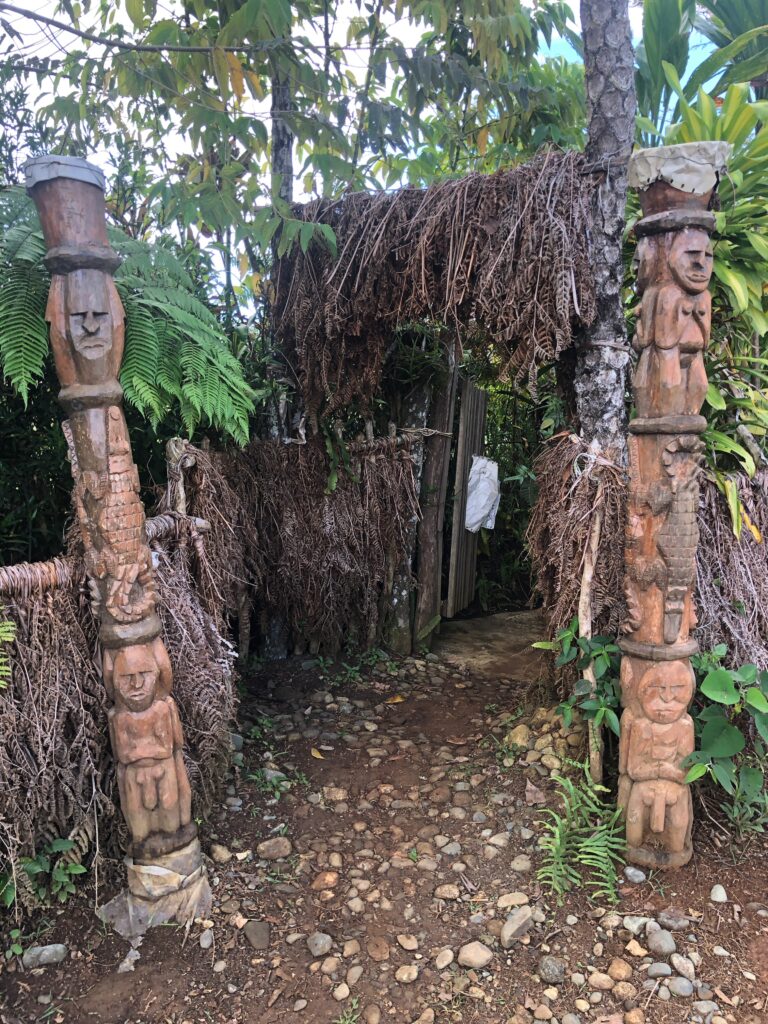 In one of their villages, first we walked around for about 20 minutes, then were introduced to their traditions and customs: how to make stone axes and fire, and what is the way for a chief to acquire three wives.
In one of their villages, first we walked around for about 20 minutes, then were introduced to their traditions and customs: how to make stone axes and fire, and what is the way for a chief to acquire three wives.

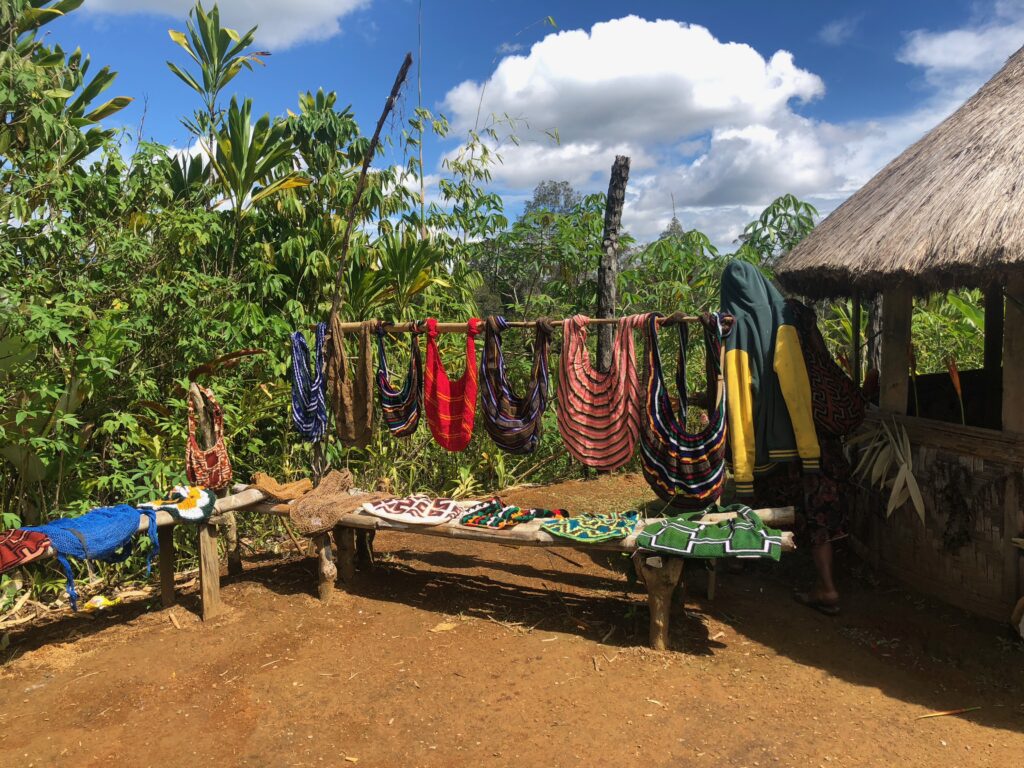
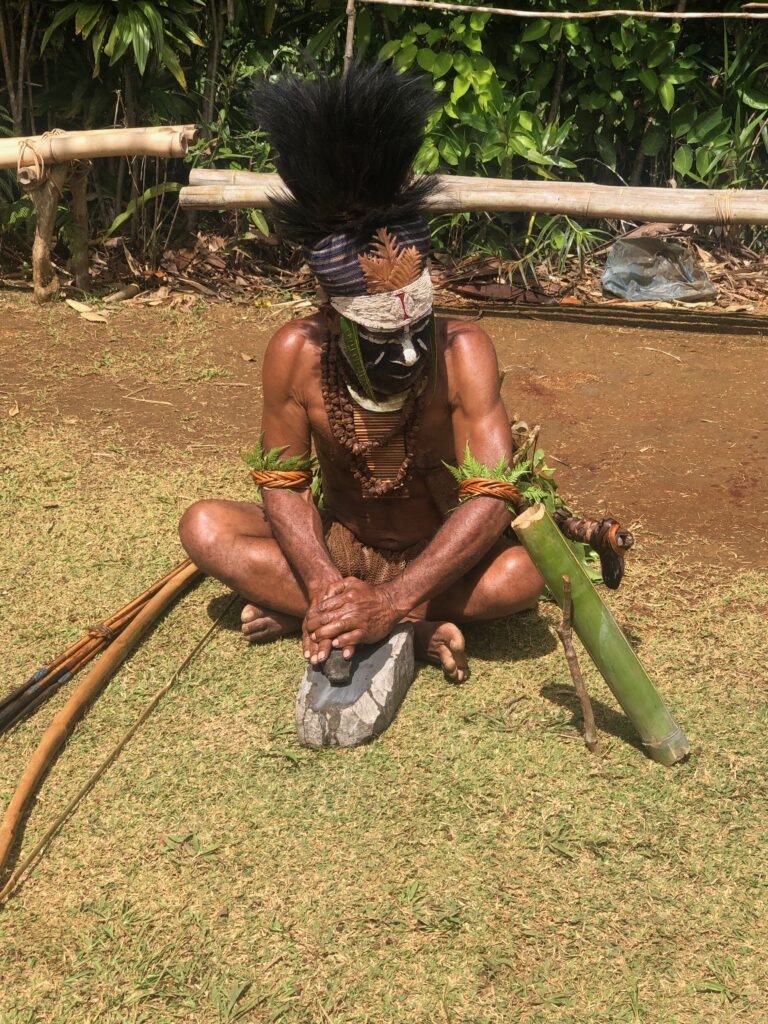
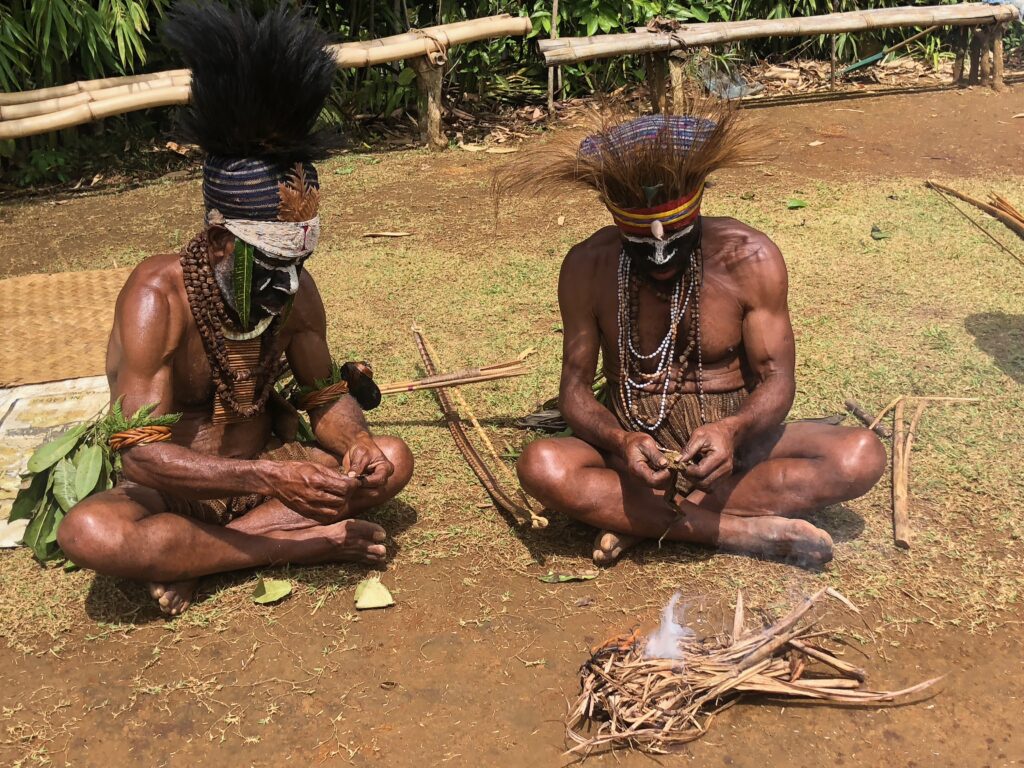
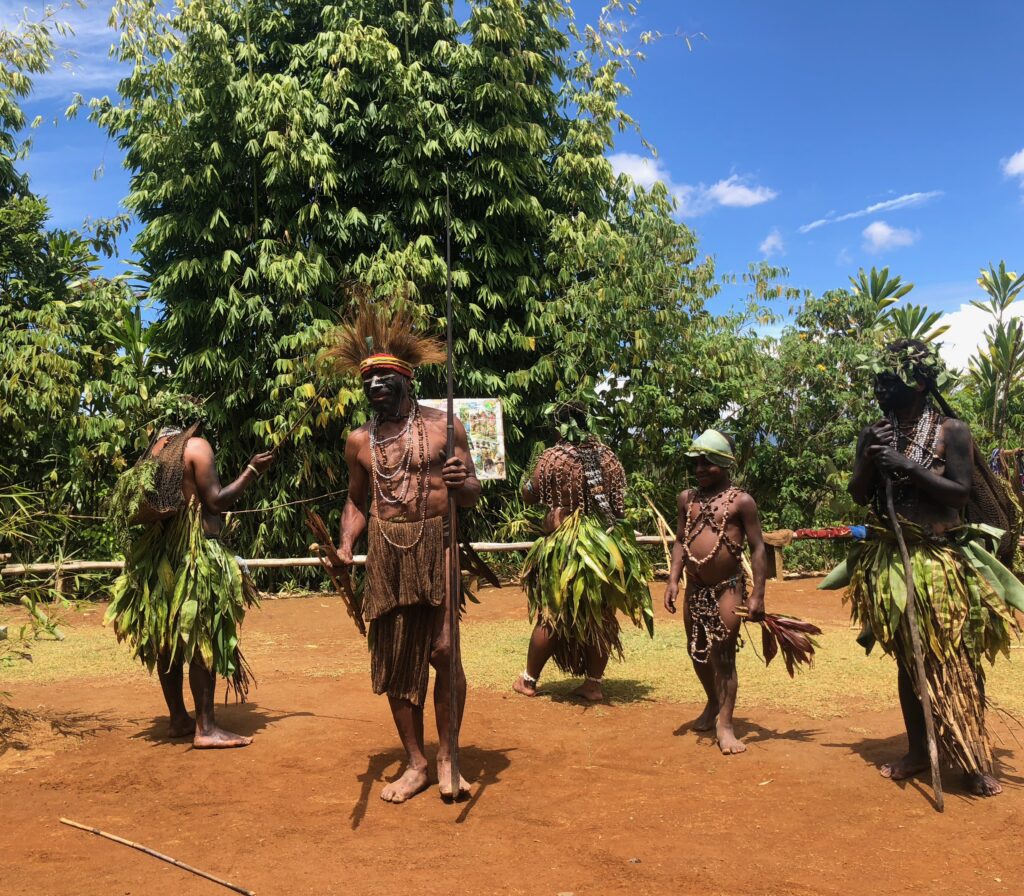 In the second village, we got a quick glimpse into the culture of the iconic Huli tribe (whom we were scheduled to visit later in their traditional lands). We saw face painting and Steve got to place on his head one of the Huli wigs.
In the second village, we got a quick glimpse into the culture of the iconic Huli tribe (whom we were scheduled to visit later in their traditional lands). We saw face painting and Steve got to place on his head one of the Huli wigs.
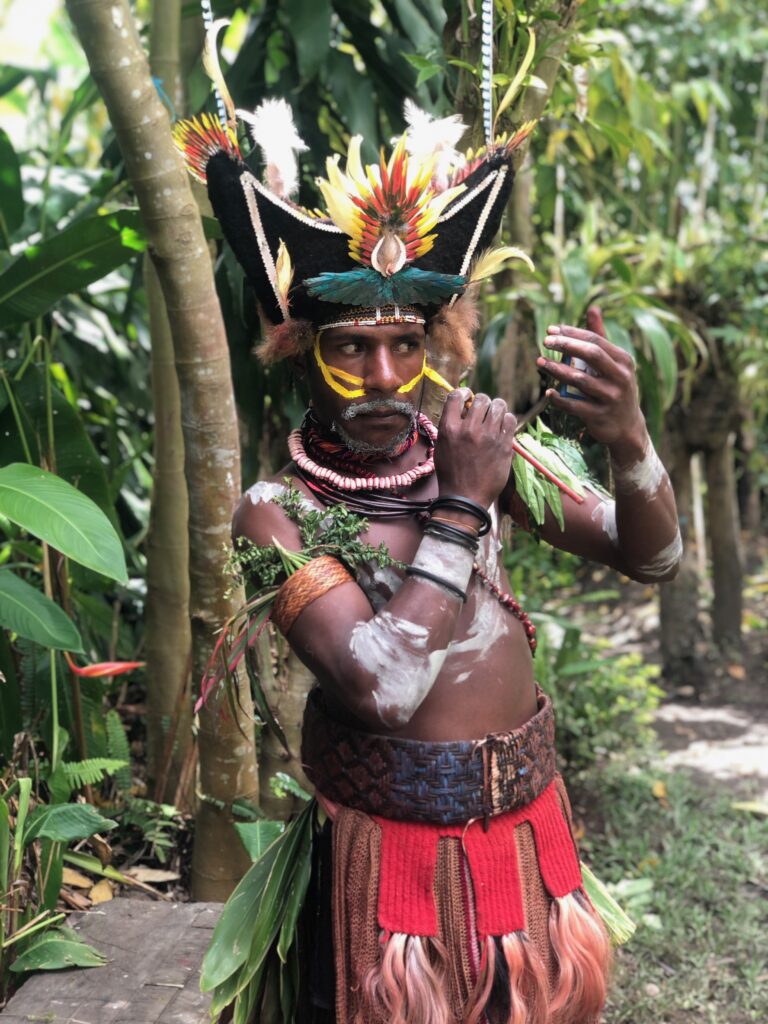
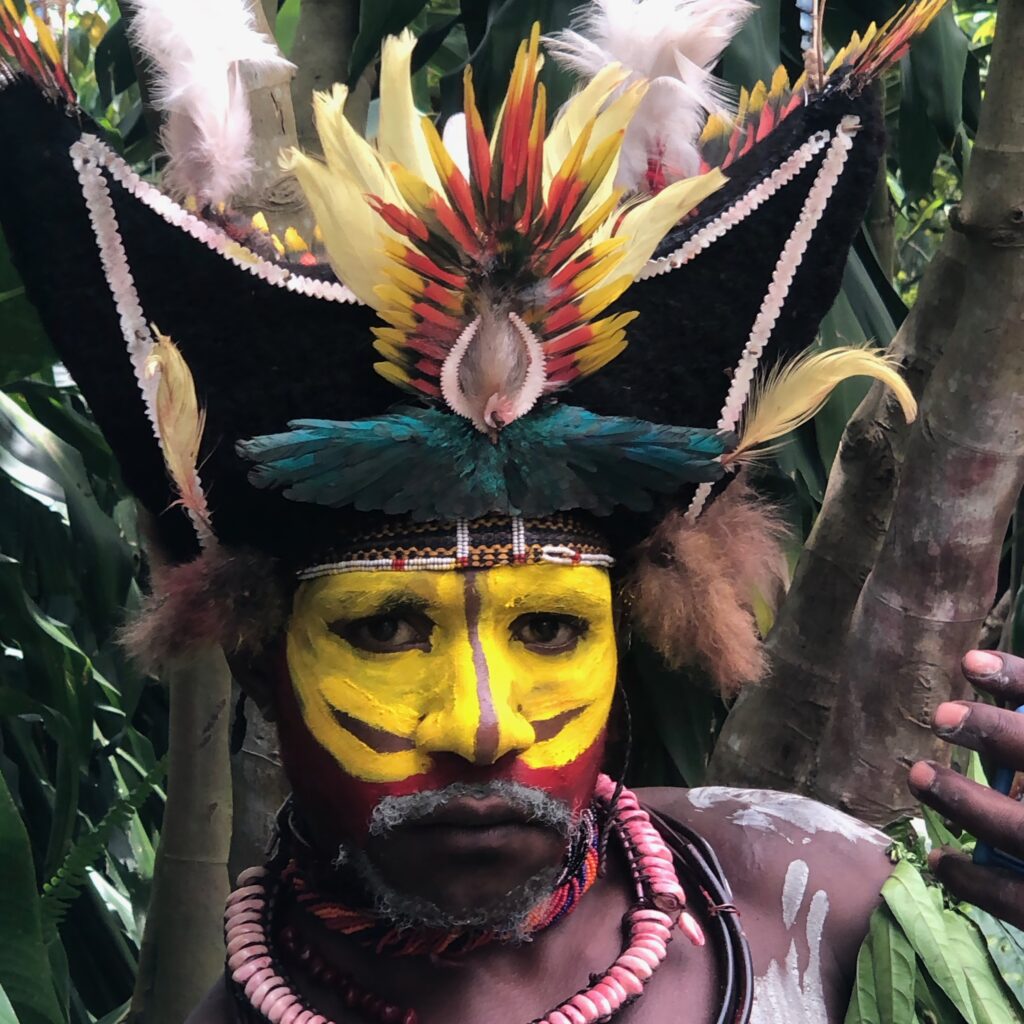
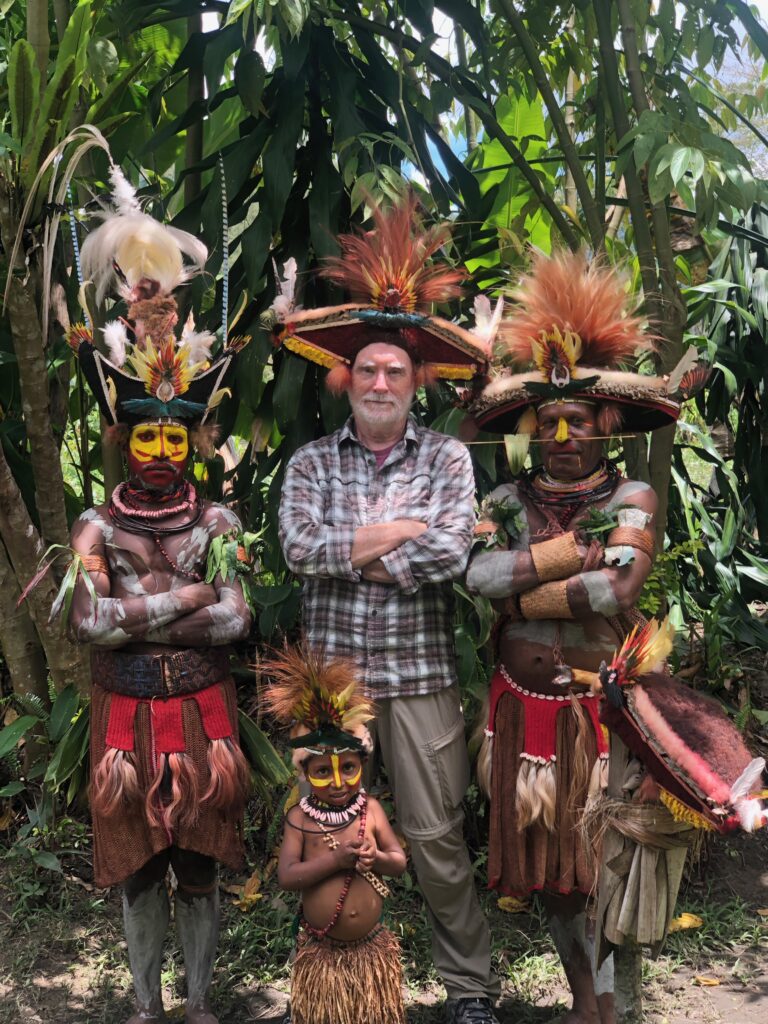 After a box lunch by a river, we spent about an hour in the third village where we witnessed the reenacting of log pulling from the forest and the curing of an injured person by the witch doctor.
After a box lunch by a river, we spent about an hour in the third village where we witnessed the reenacting of log pulling from the forest and the curing of an injured person by the witch doctor.
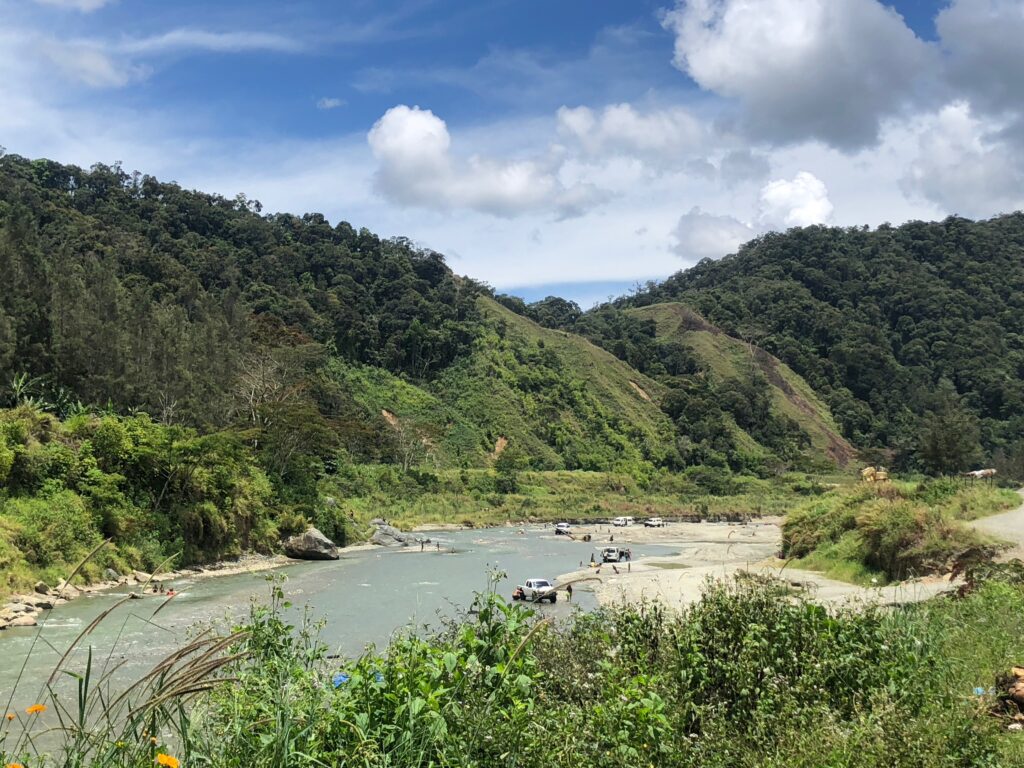
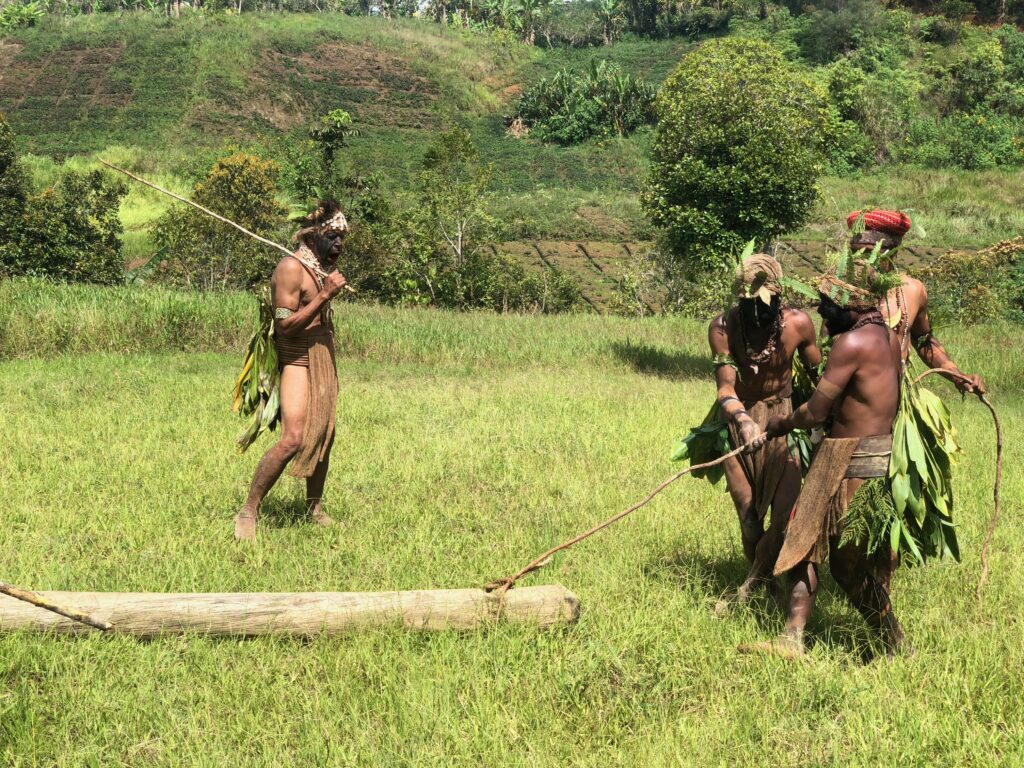
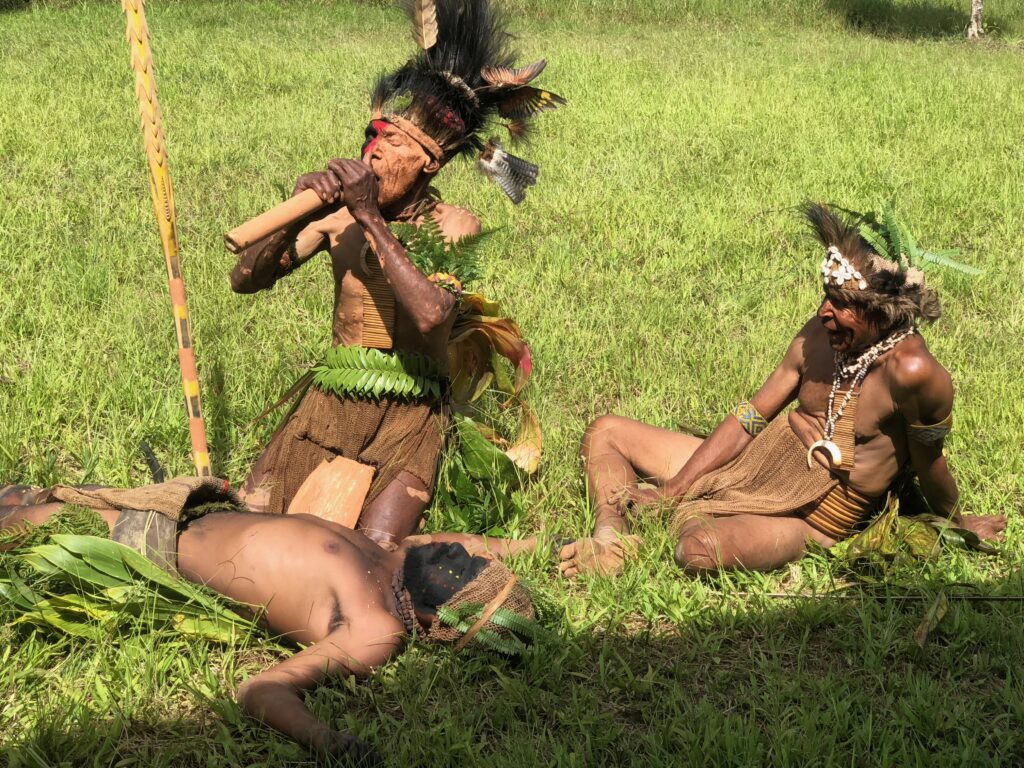 We then enjoyed a small sing-sing: men dancing and singing in their traditional clothing. It was Sunday, so the whole village was there to enjoy the show.
We then enjoyed a small sing-sing: men dancing and singing in their traditional clothing. It was Sunday, so the whole village was there to enjoy the show.
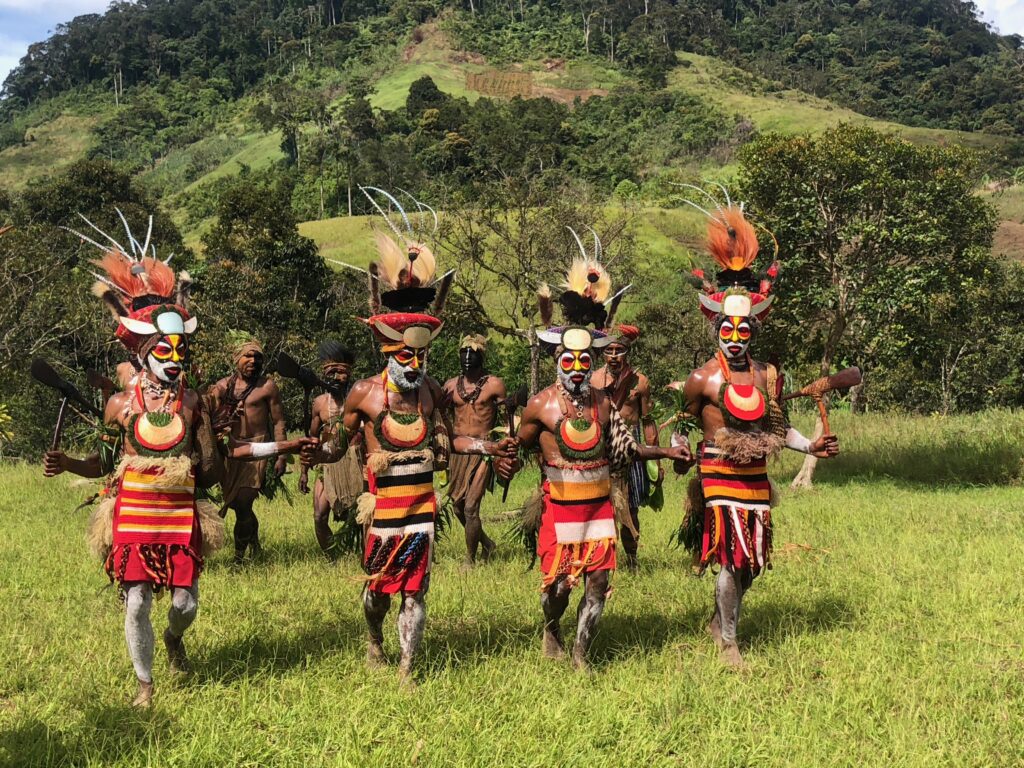
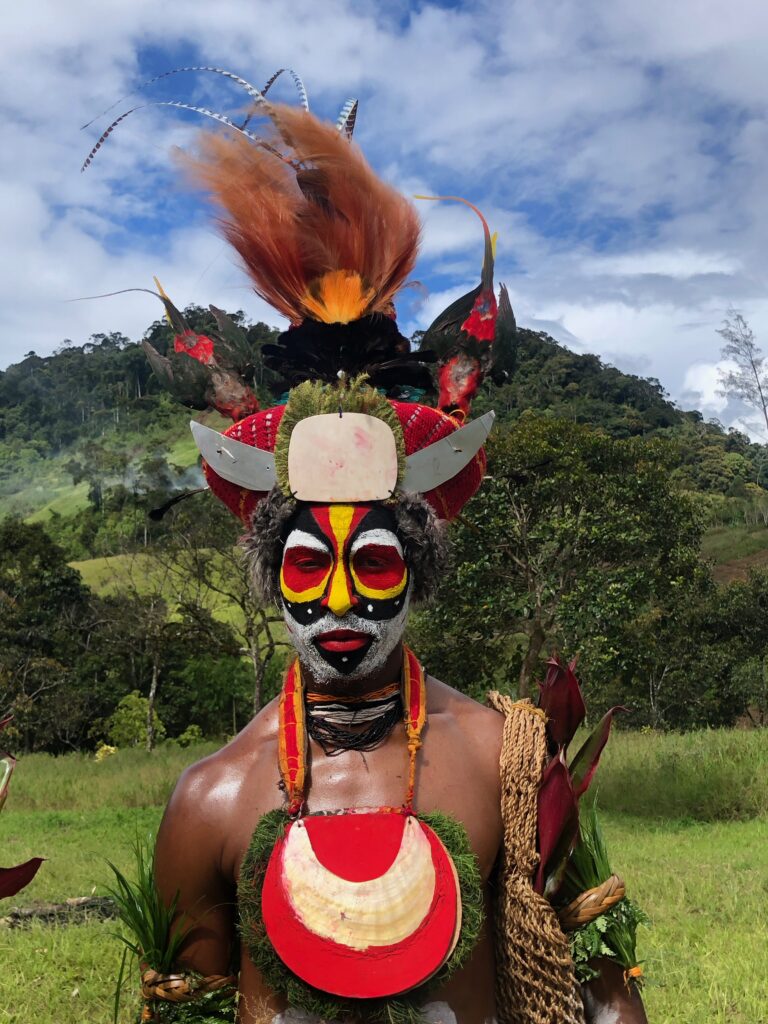
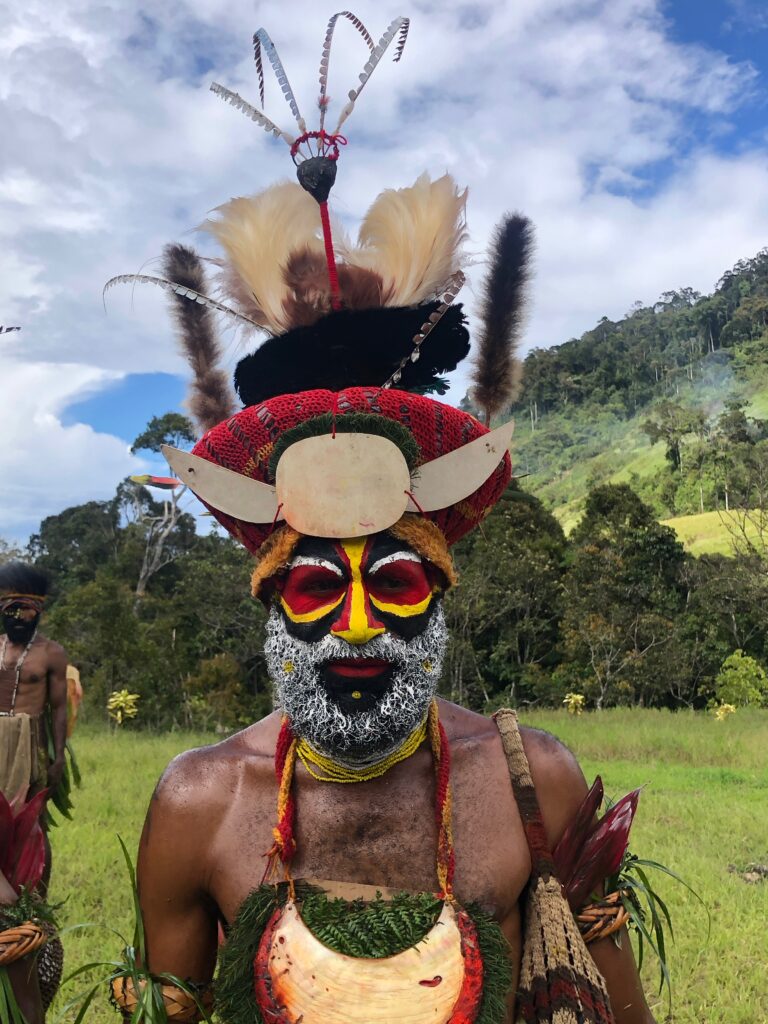
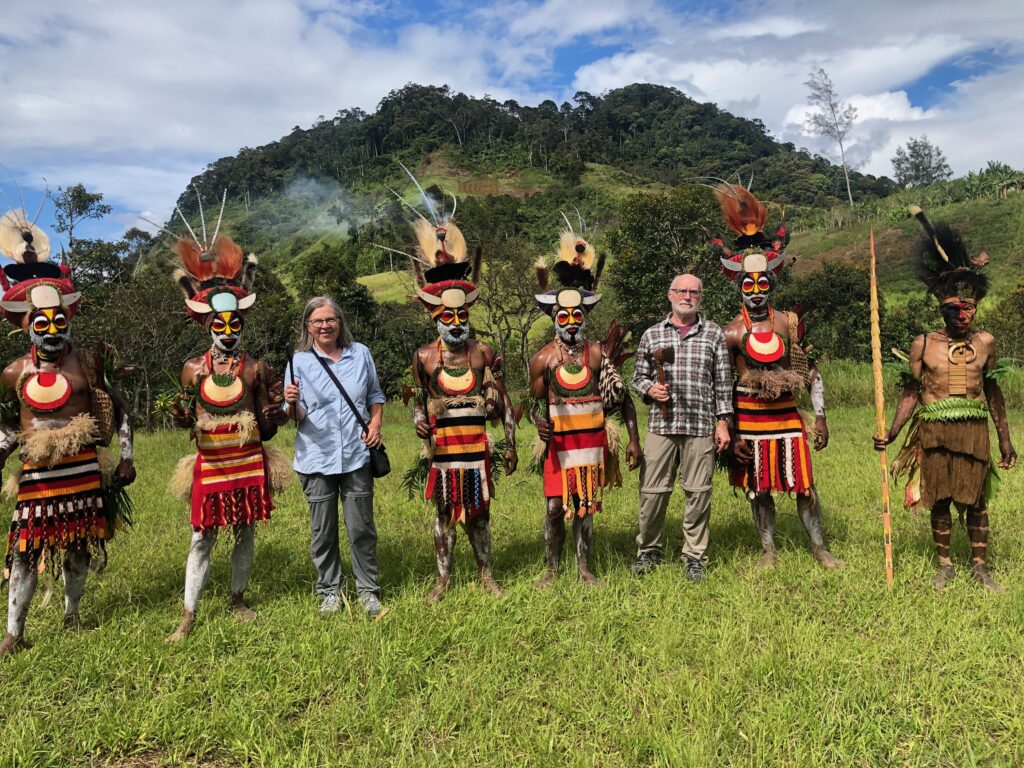 As we were getting from one village to the next, we were driving through Mount Hagen, the center for different industries of the region: coffee, tea, transportation, and mining.
As we were getting from one village to the next, we were driving through Mount Hagen, the center for different industries of the region: coffee, tea, transportation, and mining.
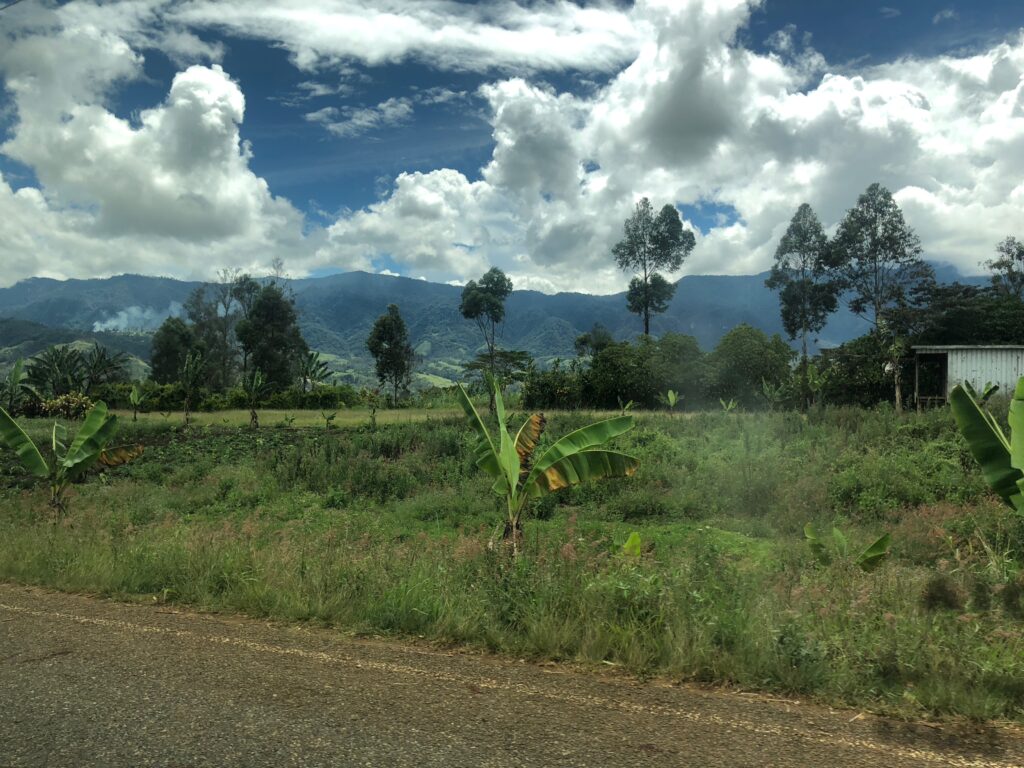 It was after dinner when we learned about our departure time for our next destination the next day, which involved flying in a charter plane to the heart of the jungle. We were looking forward to that experience very much.
It was after dinner when we learned about our departure time for our next destination the next day, which involved flying in a charter plane to the heart of the jungle. We were looking forward to that experience very much.
